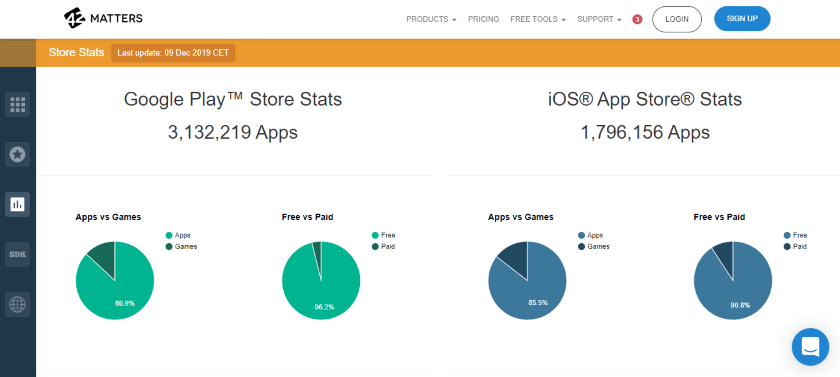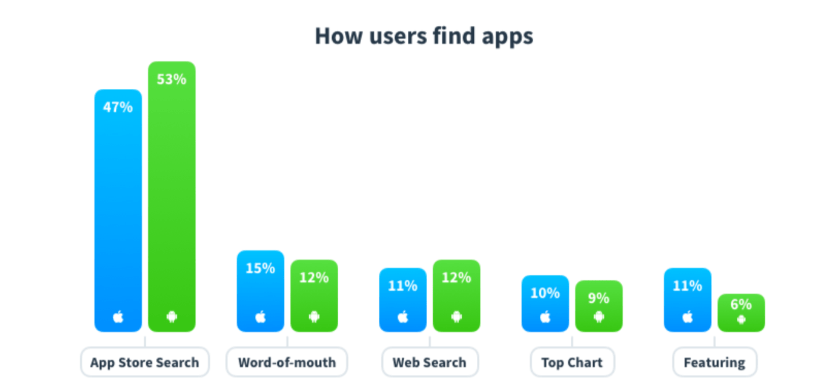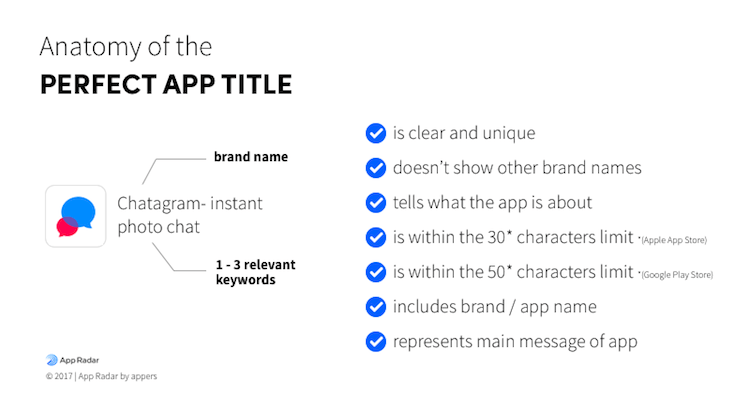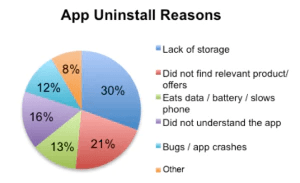Building an app is hard work. It requires a great deal of time, money, and effort. Unfortunately, even this is not enough. No matter how exceptional your app is, it will all be for nothing if people don’t know about it.
You want your app to be truly successful in the overpopulated app market. Then you’re going to need to boost visibility and drive downloads to survive. So when push comes to shove, you’ve got to make room for yourself. Get your app the attention it deserves.
How can I accomplish that?
If you’re thinking about how to get your app noticed, then you’ve come to the right place. This blog will tell you all the tips and tricks of the trade, without getting entangled in costly acquisition campaigns. So let’s start from the beginning.
What is App Store Optimization (ASO)?
App stores are crowded. With nearly 5 million apps in the global app market fighting for the same customers, you can’t expect luck to help your app get discovered.

ASO is a crucial piece of your app’s marketing campaign. It aims at optimizing an app’s listing in the Google Play Store and Apple’s App Store. Without an effective ASO strategy, your app won’t get too far.
App Store Optimization is a continuous process that improves an app’s rankings and discoverability. While you need to convince people to click on the app once it has been found, your efforts can’t stop here.
Once on the app’s Landing page, you need to encourage conversions through downloads, updates, and in-app purchases.
This involves implementing various optimization techniques within the ASO, also referred to as Conversion Rate Optimization (CRO). It includes strategies such as using descriptive titles, providing adequate descriptions, accurate category placing, effective keywords, posting quality screenshots, and much more.
Why is ASO important?
The higher an app ranks, the more relevant it appears to users. Plus, they do not have to scroll through the search results. And since the rank directly correlates with the number of downloads, a higher position gets more downloads.
ASO has numerous benefits. Research shows that ASO is the crucial factor behind 68% of all new app discoveries. When used the right way, you gain the following benefits:
i)The app becomes more discoverable
ii) Drives more traffic
iii) The number of users increases
iV) Boosts the amount of organic downloads
V) Expands user base
vi) As CTR increases, so does revenue
vii) Cuts user acquisition costs
viii) Helps grow your mobile business
What are the differences between ASO and SEO?
Necessarily, ASO and SEO are vital aspects of marketing and search. They dominate how users find things, whether it is information, content, apps, etc. So for ASO and SEO to be successful, they require a lot of planning, work, and monitoring.
Similarities between SEO and ASO are:
i) Keywords are an essential part of the campaign.
ii) Organic traffic is acquired through search queries.
However, both are different in that websites are optimized for search engines, while apps are optimized for app stores. So the search results will be significantly different. A user searches the app store when he is looking for a specific functionality from an app. On the other hand, web searches are typically for seeking out information, a transactional purpose, searching for a website, etc.
ASO optimization techniques
People spend 7 seconds deciding if they’re going to download an app or not, says incipia.co. The look of the app store page is a crucial factor in a user’s decision, from scan-able content to high-quality app store screenshots.
Do you want to improve the chances of your app getting noticed and standing out in the crowd?
Learning the right ASO strategies and investing in them can help reel in long-term benefits.
Here is how App Store Optimization is done.
1. Understand the users
Forrester states that 63% of apps are discovered through app store searches. This is the most common way of finding new apps. But more importantly, it signifies that people are searching for a specific app.
Therefore, begin by conducting research on the target market as well as the target audience. Identify their needs and behavior. Understanding your customers allows you to gather insights that can be beneficial for preparing app information. Discern why they would use the app, how it is discovered, the language they are speaking, etc.

2. Know what keywords to use
Much like SEO, keywords are a crucial aspect of marketing. They help your app to be discovered within app stores.
Research which keywords or keyword phrases related to your app is currently trending. Try to use the ones that are ranked the highest on SERPs.
The goal is to create a keyword set that you can utilize in order to promote app store listing optimization. Every element of the app’s listing in the app store affects ASO. For instance, including select keywords in an app’s title and description can improve rankings anywhere from 80-100 positions and 10-20 positions respectively, as stated in the research from Fiksu.
While you research keywords, find those that:
i) Describe the main features of your app
ii) Are synonyms of words describing these features
iii) State the app’s category
iv) Are common terms in this category
During the research, learn about the traffic, difficulty, and demand for these keywords. Know how many apps are already using them. More importantly, are the top apps using them? Keywords with high traffic that are used by a moderate number of apps are a better choice.
Apple App Store and Google Play handle keywords differently. You will only have 100 characters for keywords in ASO for iOS.
With Google Play, there is no specific keyword field. However, the app description is searchable. For the best results in ASO for Android, utilize the most effective keywords in your description up to five times. But do not overdo it; otherwise, you could get penalized by Google.
Remember that searching for the right keywords is an ongoing process. Various tools facilitate app store keyword optimization. They are not only monitoring keywords but also evaluate them and provide customized tips to boost app rankings.
i) Use words rather than phrases
ii) Singular vs. plural- research which one is ranking higher
iii) Avoid using conjunctions and prepositions as keywords
iv) Use commas to separate keywords instead of spaces
v) Use digits instead of spelling out numbers
3. Choose the right name
There’s a lot to be said about the name of your app. It is the first thing about your app that people see. Though they need to be concise, a good title makes your app known to potential users. Just by looking at the name, they get an idea of what the app does. So, titles with app descriptions can boost conversions.

A descriptive title can also improve app rankings, mainly if it contains a keyword or two. Mobiledevhq.Com says that an app can rate nearly 10% higher. This is where having adequate and current information about keyword optimization comes in handy.
Depending on whether you’re marketing in Apple or Google, you will have distinct guidelines. Google Play Store gives you 50 characters while Apple App Store offers a mere 30 characters.
4. Write accurate app descriptions
This is an essential part of an app’s metadata, where you will be given a 4000-character limit. Users can find information about the app and its main features. Utilize natural flowing sentences to attract and persuade people to your app. Above all, it should be informative and easy to understand.
It helps to provide the following answers in bullet points:
i) What does the app do?
ii) What problem does it solve?
iii) How will it make the user’s life easier?
iv) What is the price?
Moreover, the description makes an app relevant to app store ranking algorithms. Google Store utilizes keywords from this portion to index an app. On the other hand, keywords in descriptions of the Apple App Store are less applicable for app store keyword optimization.
5. Don’t negate the importance of the app icon
As a visual aspect, the app icon should be engaging yet eye-catching. Select a color scheme, size, and geometry that instantly makes a good impression and helps convey what the app does. This will let your app stand out against millions of others. But make sure that your app icon is not similar to other ones.
Both app stores have their standards when it comes to app design.
With iOS, the minimum size must be 1024X1024 pixels. Depending on the use of the icon, it is accordingly scaled-down, for instance, app icons are 180X180, navigation icons 66X66, and tab bar icons 75X75. So make sure the image looks good even after being scaled down.
And with Android, the minimum size must be 512X512 pixels. Google has set guidelines that you should follow.
6. Prepare high-quality screenshots
Once a customer lands on the app page, you have to convince them to download it. As a valid form of visual communication, screenshots help demonstrate the functionality of your app, give users a preview of the app, and tell a visual story.
And because 50 % of people base their decisions on first impressions, these visuals must impress. So pay attention to the finer details, such as layout and size requirements. Mobiloud.com points out that screenshots are the second most influential factor that convince someone to download an app, second to app ratings.
Therefore, screenshots play a crucial role in conversion optimization, a vital aspect of ASO. However, your screenshots or video do not directly influence app ratings.
Screenshots that optimize app store presence:
i) Use large captions
ii) Show off the brand
iii) Combined screenshots
iv) Highlight unique functionality
Google Play Store allows you to upload up to 8 screenshots while Apple’s App Store allows up to 10. Consider using tools such as Figma and AppLaunchpad to help create forceful app screenshots.
7. Add a preview video
Chipthompson.com states that 85% of the US audience watches videos online, over half of which is consumed on mobile. So posting a video on an app store page can boost conversions. Focus on including footage that showcases the functionality of the app or previews the gameplay. App preview videos can be up to 30 seconds long.
8. Ratings and reviews
Feedback is an integral part of ASO’s success. Both Google Play and Apple take into account comments and reviews from the users. The better the rating, the more relevant an app appears, and the higher the rankings. Reviews are one of the most important signal for App Store ranking algorithm.
The quality and quantity of positive ratings and reviews influence ASO. Apptentive says 90% of consumers consider star ratings as an essential part of app evaluation. 79% of consumers check ratings and reviews before downloading an app.
But alongside ratings and reviews, frequent updates and external promotions, such as app store ad campaigns, can also improve your app store rankings.
How can your app be at the top of the app store searches?
Well, that’s a highly guarded secret. Neither Google nor Apple shares their exact methodology for app rank. Much like SEO, the algorithms that set the rules for ASO are continually changing.
By paying attention to the following app store optimization tips, you can positively influence your app’s rankings.
1. Place the app in the proper category
Putting your app in the wrong category can lead to trouble. It could mean a rejection stamp in Apple. So if your app fits into more than one category, select the one that best describes the app. Or choose the least competitive category to give the app a better ranking opportunity.
2. Know your keyword strengths
Both app stores provide certain free keywords. For instance, the word free and the category name of the app are not counted. Use this extra space for other relevant keywords.
Moreover, instead of using only popular keywords, utilize mid- or long-tail app store keywords as well. This is because popular keywords are harder to rank for.

3. Revamp visual content
i) Avoid unnecessary elements or text in the icon.
ii) Use clear, visible CTAs
iii) Screenshots:
a) Pages that have screenshots or videos ranked better than those with no visual content.
b) Screenshots with real devices rank better than animated ones.
c) Adjust listing graphics to seasons, special events, and holidays.
d) Play Store app search optimization has recently adopted multiple innovations.
e) Test screenshot orientation to make sure visuals are up to par. Horizontal screenshots convert better in app store search results, while vertical creative perform better on product pages.
f) Be careful with screenshots in a split mode; the distance between them has increased.
g) Make sure the font size doesn’t hinder readability.
iv) Videos:
a) Make sure the first seconds of your video is optimized for high conversion. According to SplitMetrics, only 20% of users watch longer than 7 seconds.
b) Often people videos on autoplay with muted audio. Incorporate text overlays to explain features that you’re showing.
4. Encourage positive reviews
Nothing is better for ASO than a great UX. If people like an app, they’re going to be happy to provide a positive review.
Encourage users to leave a review of your app, either through push notifications or in-app pop-up notifications. But wait until the user has opened and used the app several times before asking for reviews. Also, be careful about the number of times you ask for reviews. For example, on iOS, you can get penalized if you can ask more than three times a year.
5. Localize app listings
Are your app listing and visuals prepared only in English? For an app to make a global impression, you need to implement international or localization ASO. Use your existing metadata, keywords, or screenshots in the local language of a country to reach a broader user base. Not only does it improve app visibility, but it also increases downloads and revenues.
6. Maintain the quality of your app
ASO works only if you maintain the quality of the app. Bugs and bad UI will turn away any user. Apps with high crash rates or ones with few updates are considered to have poor quality and will rank lower. Efficient app management tools can help keep apps up to date and rank higher.

To ensure users get the best UX, check the performance of your by:
i) Running tests routinely
ii) Ensuring navigation is smooth and quick
iii) Keeping loading times optimal
iv) Making sure the app is compatible with all devices
v) Providing frequent version updates
7. Use app store analytics
You’ve done the hard part, developed a success ready app and perfected the ASO strategy. Now you need to monitor conversions.
You’ll need to utilize app store analytics tools to boost your app’s marketing strategy. Furthermore, they help pinpoint specific elements that you can improve. Understanding the ASO funnel is vital for all apps, from impressions to page views to installs.
Review the data and make alterations is any ASO aspect that isn’t working for your app. However, to pinpoint what the problem is, consider making changes one at a time. Moreover, be fast and agile when it comes to implementing ASO techniques. It can substantially boost conversions.


